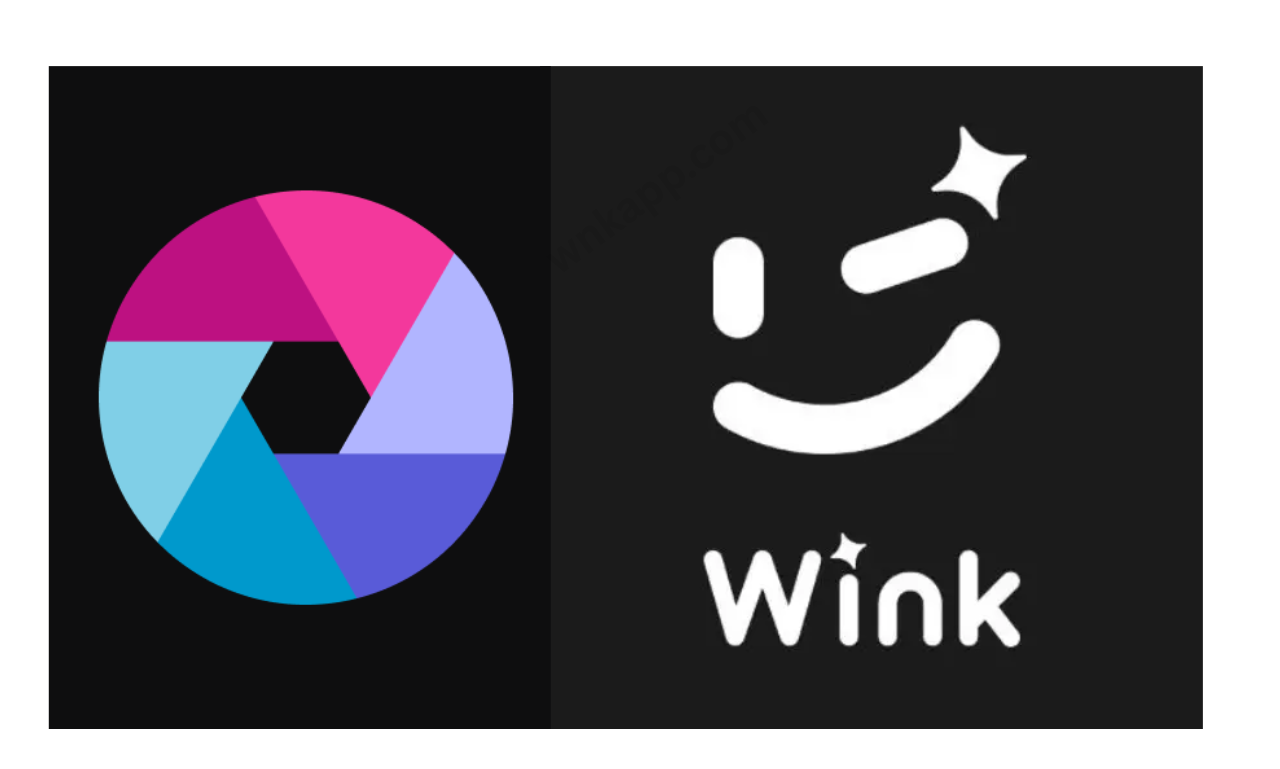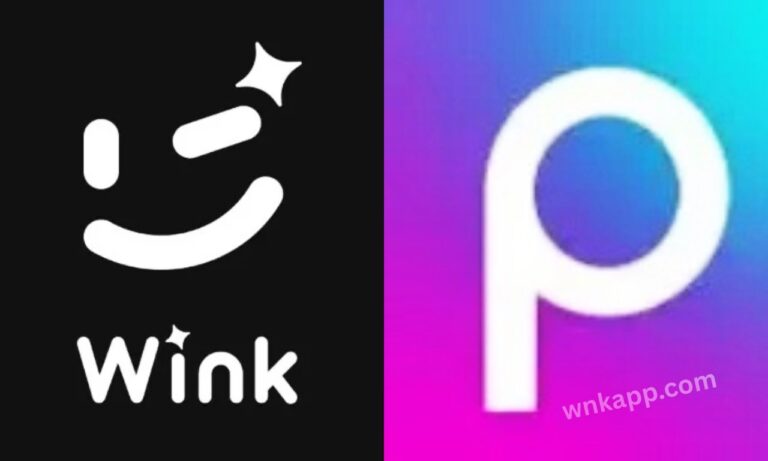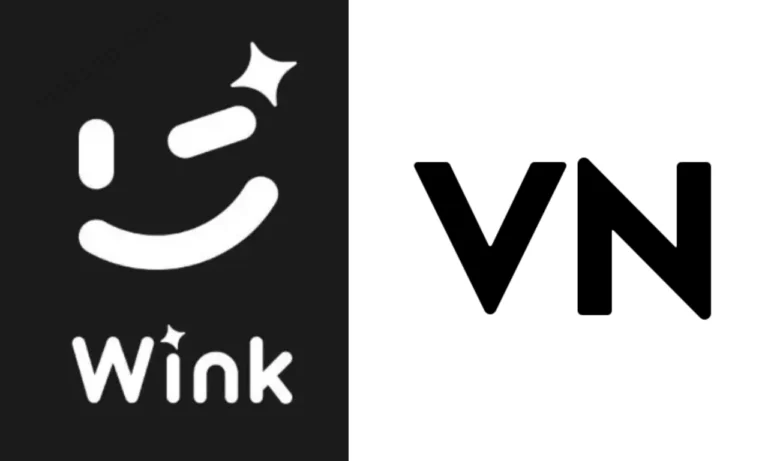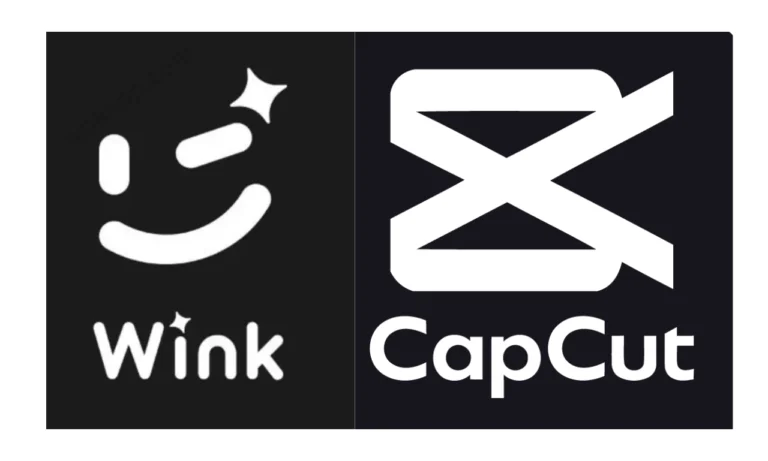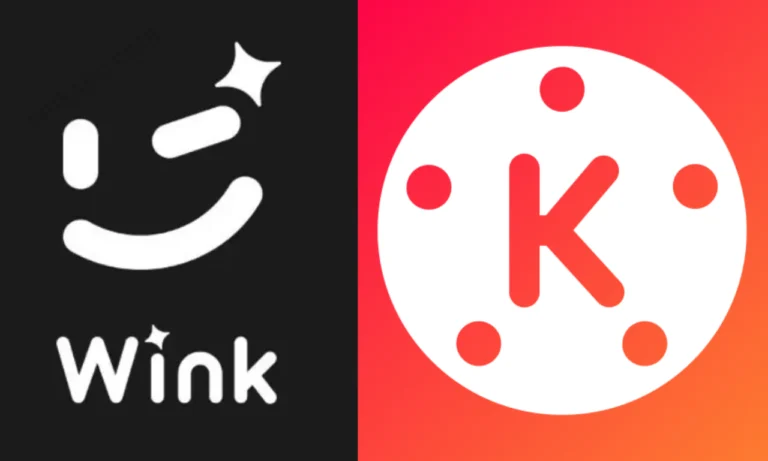Wink vs Pixlr: Which Editor Is Best for You (2025 Edition)?
In today’s fast-paced digital landscape, creating eye-catching visuals is crucial for anyone—from social media creators and influencers to marketers and casual users. The right editor can make or break your content. Wink Enhancer and Pixlr are two standout apps offering powerful editing tools, but they cater to different audiences and creative needs.
Wink Enhancer is carving its niche as an AI-driven tool for sprucing up photos and videos with speed and flair. Features like green screen effects, noise reduction, AI subtitles, and one-click beautification make it a hit with TikTokers, YouTubers, and anyone on-the-go needing polished content fast. Meanwhile, Pixlr has long been a reliable choice for deep, manual photo editing. Its layer-based interface, robust tools, and desktop heritage appeal to users seeking Photoshop-style control without the hefty price tag.
So, which editor should you choose in 2025? This article compares Wink and Pixlr across key dimensions—ease of use, editing power, pricing, and ideal use cases—to help you decide which one fits your creative toolkit best.
Overview: What Is Wink? What Is Pixlr?
What Is Wink?
Wink is an AI-powered photo and video enhancement app designed for mobile-first creators who need fast, smart, and professional-looking edits without spending hours learning complex tools. Launched as an all-in-one visual editing solution, Wink gained popularity for its simplicity, automation, and focus on short-form content creation.
The app offers a broad suite of features including:
- AI Subtitles: Automatically generate subtitles with accurate speech-to-text technology.
- Video Noise Reduction: Clean up grainy footage and low-light videos with a single tap.
- Green Screen Effects: Easily replace backgrounds for creative storytelling or professional scenes.
- Beautification Tools: Smart face and skin enhancements ideal for selfies and vlogs.
- Stabilization & Filters: Smooth out shaky videos and apply modern, stylish filters.
Wink is mostly used by influencers, vloggers, TikTok users, and content creators who need quick edits, social media-ready outputs, and a smooth user interface. It’s available on Android and iOS, with regular updates that add AI-powered features and performance improvements.
What Is Pixlr?
Pixlr is a browser-based and app-supported photo editing platform known for its powerful editing engine that mimics much of what you’d expect from professional-grade tools like Photoshop—but with a lighter footprint and no steep learning curve. It offers both Pixlr X (easy, beginner-friendly editor) and Pixlr E (advanced editor for professionals).
Pixlr’s key features include:
- Layer Support: Create multi-layered edits for composite images and complex designs.
- AI Tools: Automatic background removal, object detection, and enhancements.
- Filters & Overlays: A wide range of vintage, modern, and artistic effects.
- Text & Design Elements: Ideal for creating social media banners, flyers, and marketing materials.
- Cross-Platform: Accessible via browser and mobile app, with cloud-based projects.
Pixlr is popular among designers, photographers, students, and marketers who want full control over their editing process. Its freemium model makes it accessible to beginners, while advanced tools attract professionals.
Feature-by-Feature Comparison: Wink vs Pixlr
Choosing between Wink and Pixlr depends on what kind of editing you need—quick, mobile-first video and photo tweaks or layered, professional-grade photo editing. Let’s dive deep into how each app performs across key features.
1. User Interface (UI) and Ease of Use
Wink:
Wink is designed for speed and simplicity. Its interface is built for mobile users who need results with minimal effort. Navigation is intuitive—no cluttered menus or confusing icons. From importing clips to applying AI tools, everything is streamlined. Even if you’re a first-time user, you’ll find yourself editing confidently within minutes.
Pixlr:
Pixlr’s interface varies depending on whether you’re using Pixlr X or Pixlr E. Pixlr X offers a cleaner UI for quick edits, while Pixlr E mimics a traditional photo editing layout, which can feel complex to beginners. While both are easy to use, Pixlr E has a steeper learning curve for those unfamiliar with layered editing.
✅ Winner (Ease of Use): Wink
For quick mobile edits and instant previews, Wink offers a smoother experience, especially for non-professionals.
2. AI-Powered Tools
Wink:
Wink thrives on AI automation. It features tools like AI Subtitles, AI Retouching, and AI Noise Reduction that work in real-time. Users can apply effects with a single tap, and the app’s engine analyzes footage to intelligently enhance it—removing blemishes, stabilizing motion, and more.
Pixlr:
Pixlr has integrated several AI features, such as background removal, auto-enhance, and smart cutouts. These tools are especially helpful for design work and photo compositing. However, its AI isn’t geared toward video content—it’s strictly for photo editing.
✅ Winner (AI Tools): Tie
Wink dominates for AI in video editing, while Pixlr excels in photo automation. The best choice depends on your focus.
3. Photo Editing Capabilities
Wink:
Wink includes basic photo editing features like filters, beautification, brightness/contrast adjustment, and skin smoothing. However, its strength lies in AI enhancements, not detailed pixel-level editing. It’s perfect for creators who need fast, polished images for social media.
Pixlr:
Pixlr shines in photo editing. It offers adjustment layers, blend modes, masking, clone tools, and customizable filters. For professionals or hobbyists looking for precision control and layered editing, Pixlr delivers an impressive toolkit without needing a full desktop suite like Photoshop.
✅ Winner (Photo Editing): Pixlr
Pixlr offers advanced control and flexibility that Wink can’t match in photo editing.
4. Video Editing Capabilities
Wink:
This is where Wink sets itself apart. While it’s not a full video editor like Adobe Premiere or CapCut, it focuses on AI video enhancements—such as background removal (green screen), noise reduction, stabilization, beautification, and subtitle generation. It’s ideal for short-form videos on platforms like TikTok or Instagram Reels.
Pixlr:
Pixlr doesn’t support video editing. It is solely focused on still images.
✅ Winner (Video Editing): Wink
Pixlr offers no video editing. Wink wins by default and delivers solid video enhancement features.
5. Filters and Effects
Wink:
Wink’s filters are made with social media in mind. You’ll find trendy effects, real-time AR filters, and cinematic color tones. While not overly customizable, they look polished and ready-to-post.
Pixlr:
Pixlr’s library of filters, overlays, and effects is vast. Users can customize them deeply, layer multiple effects, and create entirely new visual aesthetics. From retro tones to bokeh overlays, it has something for every creative style.
✅ Winner (Filters & Effects): Pixlr
Pixlr’s control and variety give users more flexibility and creativity.
6. Background Editing / Green Screen
Wink:
Wink’s green screen tool is fast and automatic. Just tap to remove the background, then choose your replacement. It’s powered by AI, meaning no manual masking is required. This is great for creators who shoot content in limited spaces or want dynamic, professional-looking backgrounds.
Pixlr:
Pixlr’s AI background remover is also effective—but it’s limited to static images. You can cut out subjects cleanly and replace backgrounds using layers and blending, giving more manual control over the final output.
✅ Winner (Background Removal): Tie
Wink wins for video, Pixlr wins for photos. Choose based on your editing needs.
7. Export Quality and Formats
Wink:
Wink supports high-resolution exports up to 4K for videos and HD for images. Exporting is fast and optimized for mobile sharing—meaning you can directly upload to Instagram, TikTok, or YouTube.
Pixlr:
However, being photo-focused, it lacks video support.
✅ Winner (Export Options): Pixlr for photos, Wink for video
Each app excels in its domain.
8. Platform Compatibility
Wink:
It doesn’t offer desktop or browser support (as of 2025), which limits it to phones and tablets.
Pixlr:
Pixlr is web-based, making it accessible from any device with a browser. It also offers apps for Android and iOS, meaning you can work across desktop and mobile easily.
✅ Winner (Platform Flexibility): Pixlr
Pixlr’s cross-platform accessibility gives users more freedom.
9. Pricing and Plans
Wink:
Wink is free to use with basic features. Some advanced tools and high-resolution exports may require in-app purchases or a small monthly fee. Overall, it’s affordable, especially for influencers or creators on a budget.
Pixlr:
Pixlr follows a freemium model. Pixlr X is free with limited tools, while Pixlr E and premium templates are available through a subscription. Their Pro Plan unlocks everything but costs more than Wink.
✅ Winner (Affordability): Wink
Wink offers more value upfront for mobile video and photo editing without heavy costs.
10.Use Cases: Who Should Use Which?
| Need | Best Choice |
| Social Media Videos | Wink |
| TikTok/Instagram Reels | Wink |
| Vlogging on Mobile | Wink |
| Advanced Photo Compositing | Pixlr |
| Graphic Design & Layout | Pixlr |
| Quick Social Posts (Photos) | Both |
| Mobile Photo Enhancements | Wink |
| Desktop Photo Editing | Pixlr |
✅ Winner (Use Case Matching): Both
Each app serves its target audience well. Choose Wink for mobile video creators, and Pixlr for image editors and designers.
Pros & Cons of Wink and Pixlr
Every app has its strengths and weaknesses, and the same goes for Wink and Pixlr. Whether you’re a content creator, casual editor, or design professional, knowing the pros and cons can help you make the right decision based on your specific goals.
Wink: Pros & Cons
Pros of Wink
Cons of Wink
1- Mobile-Friendly Interface
Designed specifically for smartphones and tablets, Wink is extremely easy to use—even for beginners.
2- Real-Time Video Editing
Wink supports video enhancement in real-time, perfect for influencers and short-form content creators.
3- Free to Use
Most features are accessible without a premium subscription, with optional upgrades for high-quality exports.
4- Optimized for Social Media
One-tap exports for TikTok, Instagram, and YouTube make content sharing easy and fast.
1- Limited to Mobile Platforms
There’s no desktop or web version, which can be limiting for those who prefer editing on a computer.
2- Basic Photo Editing Tools
Wink lacks the layer-based precision and advanced photo manipulation that Pixlr offers.
3- No Support for Graphic Design
Wink isn’t designed for creating posters, logos, or composite images.
4- Fewer Export Customization Options
You can’t control output formats as deeply as you can in Pixlr.
Pixlr: Pros & Cons
Pros of Pixlr
Cons of Pixlr
1- Advanced Photo Editing Tools
Pixlr supports layers, masking, blending, and adjustment tools—similar to what you’d find in professional software.
2- Web-Based Platform
Accessible from any device with a browser—no installation required.
3- Support for Multiple Formats
Allows saving in PNG, JPEG, WebP, and PSD, giving more flexibility in file types and export settings.
4- AI Tools for Photos
Features like auto-enhance and background removal work well for still image editing.
5- Ideal for Graphic Design
Comes with templates and assets useful for making banners, social media posts, and more.
6- Free & Paid Options
Offers a powerful free version, with Pro plans unlocking full toolsets at a reasonable price.
1- No Video Editing
Pixlr doesn’t support video files, which can be a deal-breaker for content creators who also work with videos.
2- Steeper Learning Curve
Especially with Pixlr E, the interface and tools may feel overwhelming to first-time users.
3- Occasional Lag on Browser
Depending on your device and internet speed, the web-based editor may experience slowdowns.
4- Ads in Free Version
Free users may encounter ads or limited access to some tools and templates.
FAQs
1. Can I use both Wink and Pixlr together for editing?
Yes, many creators use Wink and Pixlr together for a complete workflow. For example, you might enhance your video using Wink’s AI tools like stabilization and subtitles, then take screenshots or thumbnails into Pixlr for advanced photo editing or adding text overlays.
2. Which app is better for social media content creation?
Wink is the better option for social media creators focused on short-form videos, real-time filters, and quick exports to platforms like TikTok, YouTube Shorts, and Instagram Reels. Its mobile-first interface and AI tools are optimized for speed and simplicity. Pixlr, while powerful for images, doesn’t support video editing and is more suited for photo content or branding visuals like posters, ads, or product shots.
3. Is Wink available for PC or just mobile devices?
Wink is primarily designed as a mobile video editing app for Android and iOS. However, with the help of Android emulators like BlueStacks or LDPlayer, you can use Wink on your PC as well. This gives desktop users access to the app’s AI-enhanced tools while enjoying a larger editing screen.
4. Does Pixlr support AI features like Wink?
Pixlr has started incorporating some AI-powered features such as background removal and one-click enhancements, but it’s not as advanced in video editing as Wink. Wink focuses on AI subtitles, stabilization, and filters for videos, while Pixlr’s AI is more image-centric, making it better for designers and photographers rather than video creators.
5. Which one is better for beginners with no editing experience?
If you’re a beginner with little to no editing experience, Wink is likely the better choice. It offers intuitive drag-and-drop features, auto-enhance tools, and minimal learning curve. Pixlr is beginner-friendly too, especially for photo editing, but might feel slightly more technical if you’re not used to graphic design interfaces.
Conclusion
In 2025, both Wink and Pixlr offer powerful tools, but your choice depends on your creative needs. Wink is ideal for video editors, influencers, and social media creators with its AI-enhanced video features. Pixlr, on the other hand, is best suited for photographers and graphic designers who need advanced photo editing tools in a browser. Choose Wink for effortless video enhancement and Pixlr for detailed image control.

